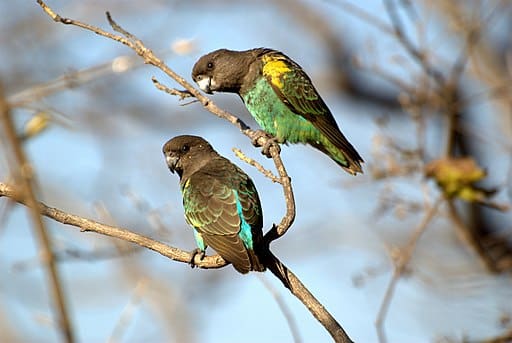Meyer’s Parrot (Poicephalus meyeri) populations are declining due to habitat destruction, persecution and heavy trapping for the wild bird trade. From 2004 to 2008, the World Parrot Trust funded studies for Meyer’s Parrot, including research on its niche specialist qualities, potentially useful for the conservation of other at-risk Poicephalus species in Africa. Surveys showed that the species has a wider range than previously thought in some areas to the north and west; in other areas a near-disappearance. More research was deemed needed, leading to conservation plans for Meyer’s and other threatened parrots, and special reproductive aids such as nest boxes for breeding.
Status: IUCN Least Concern / CITES Appendix II
Population: Unknown but reported as generally common. Stable.
Threats: Not globally threatened. Generally common in some parts of range and scarce or absent in others. Decline thought to be due to habitat destruction, persecution and heavy trapping for trade.
Natural history: Meyer’s Parrots are found in most parts of Africa in woodlands such as dry savanna, gallery and riparian areas, secondary growth and some cultivated fields up to an elevation of 2200 m (7216 ft). They eat fruits, nuts and seeds, along with a few legumes. Occasionally they can be seen foraging on grain and insects. They are occasionally found in suburban areas and are seen in pairs or groups of up to 50 birds at food sources, where they spend the day before roosting in tree cavities for the night.

